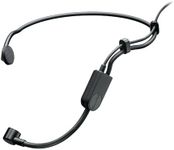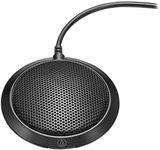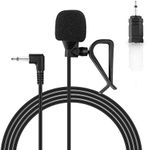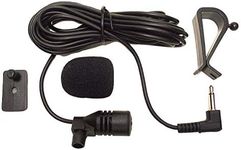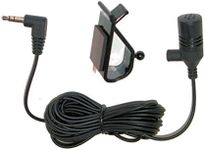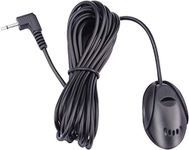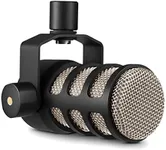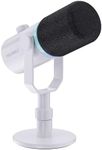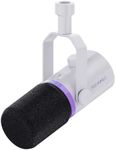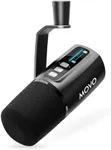Buying Guide for the Best Car Microphone
Choosing the right car microphone can significantly enhance your in-car communication and entertainment experience. Whether you need it for hands-free calling, voice commands, or recording, understanding the key specifications will help you make an informed decision. Here are the main specs to consider when selecting a car microphone and how to navigate them to find the best fit for your needs.Microphone TypeThe type of microphone is crucial as it determines how the microphone captures sound. Common types include dynamic, condenser, and lavalier microphones. Dynamic microphones are durable and handle high sound pressure levels well, making them suitable for noisy environments. Condenser microphones are more sensitive and provide higher sound quality, ideal for quieter settings. Lavalier microphones are small and clip onto clothing, perfect for hands-free use. Choose a type based on your primary use case: dynamic for noisy cars, condenser for high-quality audio, and lavalier for convenience.
Frequency ResponseFrequency response refers to the range of sound frequencies a microphone can pick up. A wider frequency response means the microphone can capture more detail in the audio. For general use, a frequency response of 20 Hz to 20 kHz is sufficient, covering the full range of human hearing. If you need the microphone for specific purposes like recording music or high-fidelity audio, look for a wider range. For basic communication and voice commands, a narrower range will suffice.
SensitivitySensitivity indicates how well the microphone can pick up quiet sounds. It is usually measured in decibels (dB). Higher sensitivity microphones can capture softer sounds more easily, which is beneficial in quieter environments. However, in a car, where background noise is common, a lower sensitivity microphone might be better to avoid picking up unwanted noise. Consider your car's typical noise level when choosing the sensitivity.
Directional PatternThe directional pattern, or polar pattern, describes how the microphone picks up sound from different directions. Common patterns include omnidirectional, unidirectional (cardioid), and bidirectional. Omnidirectional microphones pick up sound equally from all directions, which is useful if you need to capture audio from multiple sources. Unidirectional microphones focus on sound from one direction, reducing background noise, making them ideal for hands-free calling. Bidirectional microphones capture sound from the front and back, useful for interviews or conversations. Choose based on how you plan to use the microphone in your car.
ConnectivityConnectivity options determine how the microphone connects to your car's audio system. Common options include wired (3.5mm jack, USB) and wireless (Bluetooth). Wired connections generally offer more stable and higher quality audio but can be less convenient due to cables. Wireless microphones provide more flexibility and ease of use but may suffer from connectivity issues or lower audio quality. Consider your car's setup and your preference for convenience versus audio quality when choosing the connectivity type.
Noise CancellationNoise cancellation technology helps reduce background noise, ensuring clearer audio. This is particularly important in a car environment where engine noise, road noise, and other sounds can interfere with audio quality. Microphones with active noise cancellation use additional microphones and processing to filter out unwanted sounds. If you frequently drive in noisy conditions, a microphone with good noise cancellation will be beneficial. For quieter cars or less critical use, basic noise reduction features may be sufficient.

